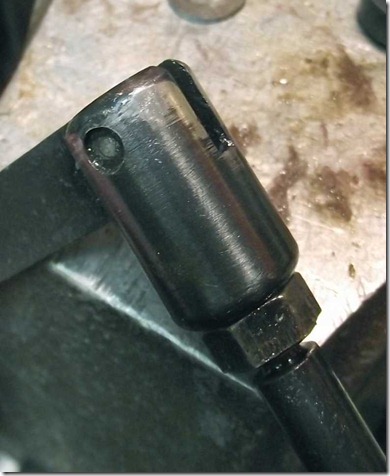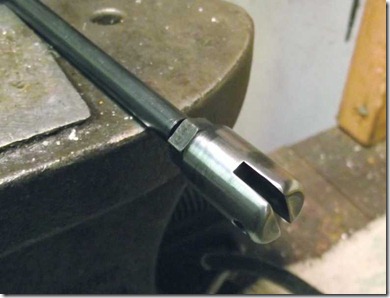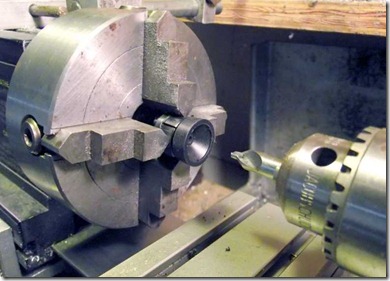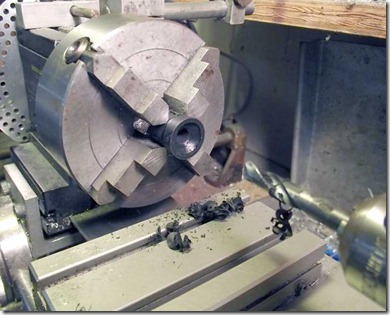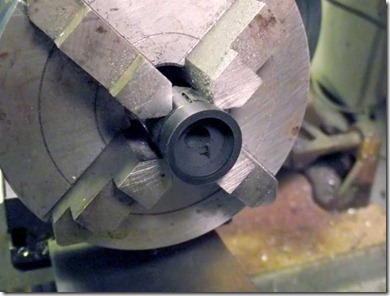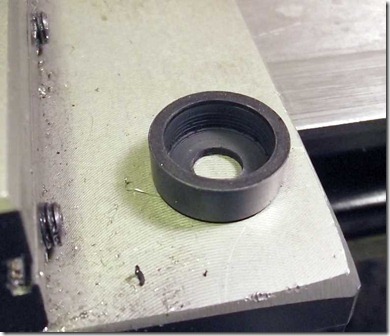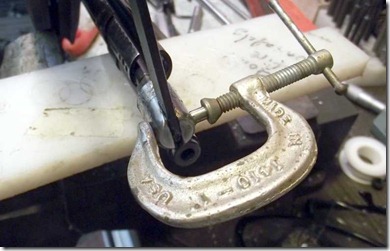So I spent some time checking velocity and it was slow even for an old beat up air rifle. About 490 fps with 10 pumps shooting 14.3gr. Crosman Premier pellets. I wanted to make a new pump cup that was more like the old leather one in form and there was a bit of a grinding noise when pumping.
The grinding noise was likely caused by the galling, lack of lubrication and the still intact, fresh from the factory, burrs caused by drilling and slotting the pivot on the pump rod. The burrs were sharp!
Smoothed that up.
I wanted to get the pump cup as concentric as possible, the 4 jaw chuck worked better for holding the stubby piece of Crosman pump rod than the 3 jaw did anyway.
Drilled 1/4”
Bored it to have a nice flat bottom.
A few machining marks but not bad for rubber. The old steel washer from the leather cup fits in the bore now.
Screwed back together. I lubed the felt ring with 30wt. oil and put a very light schmear of moly on the pump cup. I figure it works for spring piston parachute seals, why not for pump seals?
Using a c-clamp to push the pivot pins back in. Much better than wailing away with a hammer.
So with the rod adjusted so there was less headspace I now get about 540fps, which isn’t up to the level of my Crosman 120, but isn’t terrible. Possibly a little more headspace could be adjusted out or the entire pump cup holder could be redesigned (there is a lot of dead space in the design). But it’s not bad for an old rifle ( I would love to hear what sort of velocities other people are getting from their Rochesters though!). The grinding noise is gone when pumping. Barring any unusual problems I’d say that it is fixed.
Overall my reseal was like this: Disassemble, unsolder the vale and remove as much of the old solder as one can, use an o-ring to seal the inlet valve cap, cut two new flat seals for inlet and exhaust, use teflon tape for the tube to valve seal. Modify a Crosman 1377 pump cup to replace the old leather one (if needed). debur as needed and reassemble.
I was worried about the tube twisting but I spoke with Ron Sauls of Bryan and Associates and he doesn’t think it’s an issue. I’d have to agree going by how it feels when pumping. He sells a seal kit for the Rochester by the way, if you are going to work on your own. His has an o-ring where I used teflon tape – If I had taken more care removing the old solder I probably could have fit one in.
